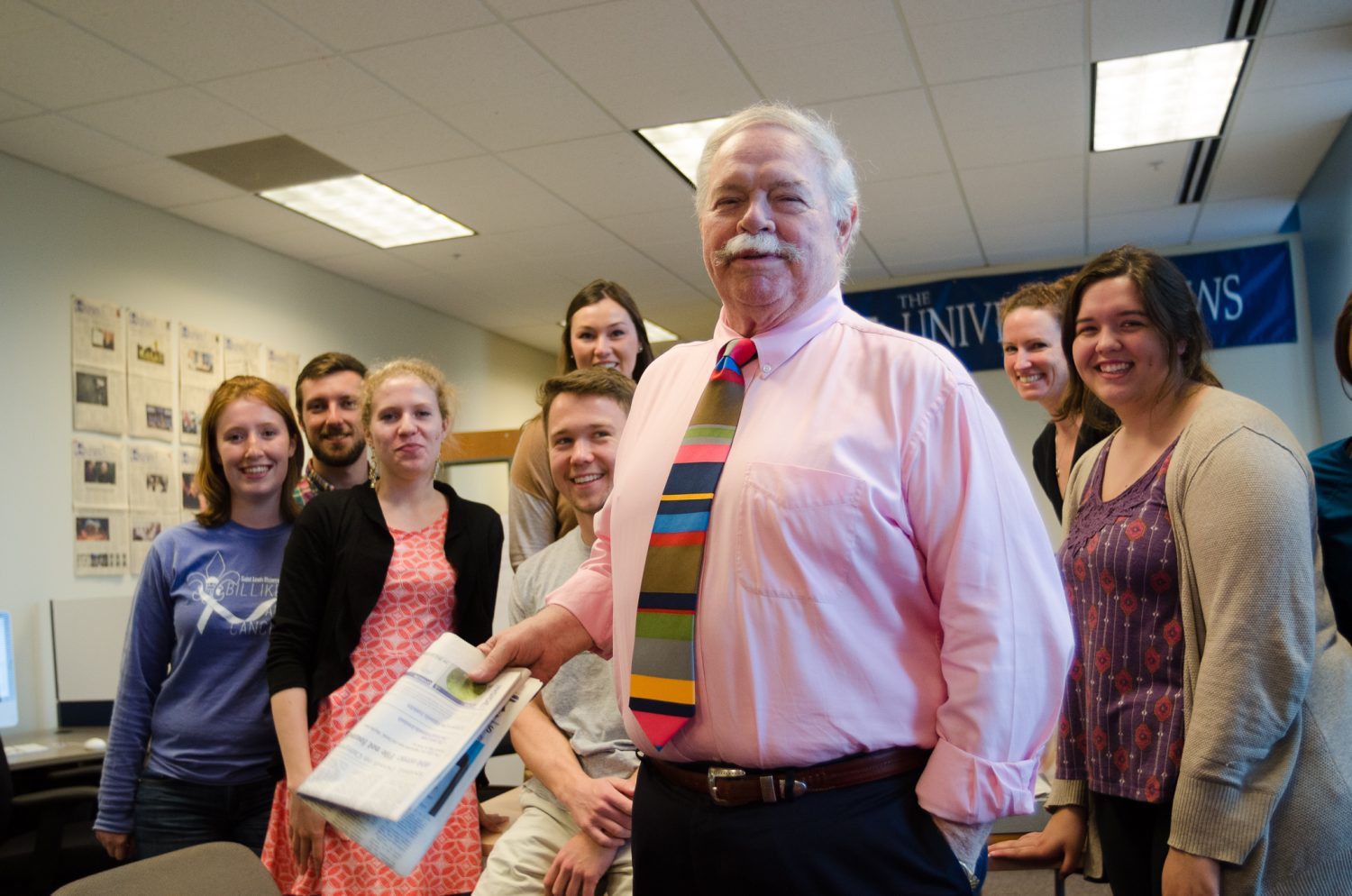Last semester, the Rainbow Alliance faded. The gay, lesbian, transgender and straight allies student group on Saint Louis University’s campus did not weather the absence of a president well, and it almost fizzled out of existence.
A new president and about a dozen active members meet weekly and are revitalizing the group, but don’t expect to see them leading a gay pride parade down campus any time soon. Chartered in 1991, the Rainbow Alliance has carved its niche at SLU as both a quiet, almost underground support system and an occasional informative force.
Matt LeBlanc, the group’s president, said he was hesitant to take the job this year because, “It’s one more thing to do. But it’s important because so many kids at SLU need a place to go.” His apprehensions have evolved into enthusiasm as he aims to build a stronger foundation for next year’s group.
The Rainbow Alliance did not apply for funding last spring during its lapse in leadership. The current lack of cash means that the group must ask the Student Government Association for spot funding, which is a more tedious process.
LeBlanc does not seem discouraged by this, as he focuses on other goals for this year, including the creation of a safe zone at SLU. The program, which already exists at several other Jesuit universities, including Regis University, would consist of training sessions for students and faculty, and would culminate in a system that would let students know where to go for help. Individuals trained as counselors for the safe zone would wear stickers or put signs in their offices so students would know who they could confide in.
According to LeBlanc, this can be especially difficult at SLU, where the gay and lesbian community can seem invisible. Also, he said that misunderstandings about the purpose of the Rainbow Alliance can also create tension in the student body. LeBlanc said that one of the group’s members overheard a student in the dorms lamenting at one of the group’s neon flyers, “How do they get funding at a Jesuit school?” This is a common cry from conservatives on campus and the question has a concrete answer.
The charter reads that the group is to “be educational and supportive in nature,” a cause that the administration backed by approving the charter; and in January of 1991, University President Lawrence Biondi, S.J., issued a statement that said, “Saint Louis University has an educational and pastoral responsibility to work with those who are struggling with their sexuality, and to fight the ignorance, prejudice and discrimination that gay people face.”
The group’s visibility on campus has varied, according to Asst. Vice President of Student Development Phil Lyons. “I think the organization goes through ebbs and flows of being active on campus. But just because you (don’t see) the group on campus all the time doesn’t mean it’s not serving a purpose for the community.”
“There have been phenomenal presidents of the organization,” he said. “But their agendas have been different.” He explained that some have pushed for more awareness of diversity on campus, while others have focused on making gay, lesbian and transgender students feel more comfortable on campus.
As for outcries from students questioning the importance of the Rainbow Alliance, LeBlanc said, “Students need a resource if they are searching or in the closet, and if they hear something like that it can be damaging.”
LeBlanc knows firsthand about the experience of coming out at SLU. He came out to his floor freshman year and got mixed reactions from his new friends. Some of the guys on the floor who had been his friends stopped talking to him altogether.
He said that students he has talked to have expressed their displeasure with the level of openness at SLU. “One kid said to me, ‘Remember high school? It’s like that.'”
As a resident advisor in Reinert Hall his sophomore year, however, LeBlanc’s experience was much better. “Ninety percent of the kids on my floor were awesome, and I know that I made a difference in their lives too.
“I don’t know if I would be as happy or comfortable now at SLU if it hadn’t been for those 40 people who were there for me.”
LeBlanc is a student in Parks College, and he said that he has noticed a difference in the acceptance of gays from school to school, Parks being one of the most often complained about schools. “It’s the reverse in the nursing school, or with physical therapy students.”
LeBlanc is also active in ClubSLU, and said that his co-workers have been understanding during his years working there. LeBlanc will graduate in the spring, when he hopes to leave SLU a more tolerant place than when he found it.





